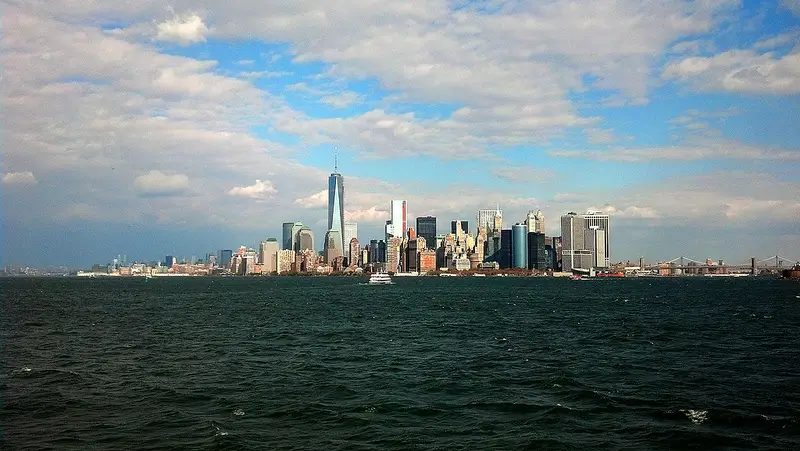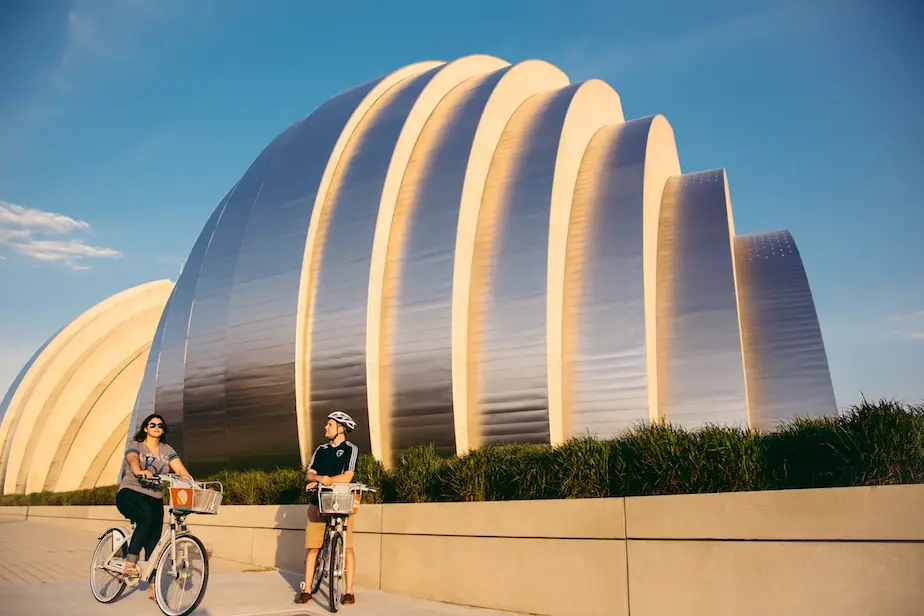Thinking Outside the Bus: San Francisco Deals With Google Buses
It used to be difficult for me to visit San Francisco. As a native of Southern California, I represent one of the few things San Franciscans just can’t tolerate, along with greenhouse gases, the Central Freeway, and coffee shops that don’t have a separate bin for compost. But recently, San Franciscans have had to deal with something that irks them even more than insufferable bubble heads from southern half of their state like me: Google buses.
Over the past few years, tech giant Google has phased in a new luxury bus service for the multitudes of young, hip programmers who work at its sprawling Mountain View headquarters but live in San Francisco. Other Silicon Valley titans such as Facebook and Apple have followed suit.
These buses are nothing like the drab, gray buses run by MUNI, the city’s transit agency. They are tall, white, and feature tinted windows, cushy seats and onboard wi-fi. Often referred to as Google buses, or “G-buses” for short, they have unleashed a firestorm of criticism that speaks to the hard economic truths of the city. Critics decry the massive amount of space the buses take up and that they often park for extended periods of time in public bus stops. But perhaps their most stinging critique is that they symbolize, and perhaps even worsen, the widening divide between the city’s rich and poor.
Though this feud has been stewing for a number of months, it boiled over last month when citizens banded together to protest Google buses. In San Francisco, protesters blocked a bus, holding a coffin with the words “affordable housing” etched on the sides. In nearby Oakland, also affected by the G-bus phenomenon, protesters took it even further by throwing a rock through the window of a Google bus.
With all this Google bus brouhaha distracting Bay Area residents from their traditional disdain for Southern California, it was the perfect time for me to visit. And as soon as I got into town, stepping out of a BART station in the Mission district, one of the first things I saw was a giant G-Bus lumbering south.
As I continued north on Valencia Street, I decided to stop into a bookstore I passed along the way. It’s a San Francisco classic, in a hundred-year-old building with high ceilings and two stories of vaguely Victorian apartments above, with a mix of new and old books in sitting in the storefront, a cruiser bike hanging above the entrance, and a clever name: Dog Eared Books.
I decided to casually ask the cashier what she thought about the Google buses. Her sunny demeanor quickly turned sour. She fell silent for a moment, then muttered in a hostile deadpan, “They’re ruining the city. They make it harder for average people to live here.” But she also recognized that they’re part of the many dangers city dwellers face. “San Francisco has always been about hustle,” she tells me. “A lot of people are upset about these buses. But I won’t let it get to me. I ride to work on my bike every day.”
Though plenty of people share this sentiment, it may not be fair to blame Google buses for single-handedly raising home prices in the City by the Bay. Although some research, such as a paper done by a former grad student at UC Berkeley, suggests that there is a positive correlation between Google bus stops and higher housing costs, many factors are at play. And it’s important to remember the positive effects of Google buses: they take traffic off the highways, reducing carbon emissions and congestion. Perhaps it’s a testament to how advanced San Francisco is in the field of mass transit that people can travel by bus there and still be seen as anti-progressive.
There are a number of solutions in the works. San Francisco officials have proposed charging G-buses one dollar for every city bus stop they use (opponents naturally think that that’s not enough). Google has complimented its bus service with a new ferry line to its campus. Naturally, Google ferries also come equipped with wi-fi.
But the core issue has as much to do with the rest of the Bay Area as it does with San Francisco. San Francisco, with a population of roughly 825,000 people, represents only 11.5% of the Bay Area’s 7.1 million residents, yet it’s the only place (besides Oakland) that Google and Facebook employees move to in large enough numbers as to justify G-bus service. The issue is perhaps summed up best by comedian Emily Heller in a recent SF Weekly article. “Like a lot of Bay Areans, when I’m traveling, I tell people I’m from San Francisco. I say this despite the fact that I was born and raised in a lovely old house in Alameda,” she explains. “I don’t claim S.F. just for convenience… Alameda is close enough and boring enough to always be in San Francisco’s shadow.” In short, people who work in the Bay Area want to live in San Francisco more than any other city in the region.
Why is this? In a way, San Francisco is a victim of its own success. In the 50s, while most American cities gutted their streetcar lines and bulldozed viable neighborhoods to build freeways, San Francisco managed to save key streetcar lines (today they’re run by MUNI) and put the brakes on runaway freeway construction. Today, the city is a textbook example of the urban planning policies embraced in planning circles everywhere. But other Bay Area cities weren’t so lucky. Places like Hayward, Freemont, and Concord fell victim to the sprawl-centric policies more closely associated with other US metro areas, including (much to the chagrin of Northern Californians) metropolitan Los Angeles.
In a way, the overwhelming preference of well-heeled Google employees for San Francisco as opposed to sprawling Bay Area suburbs is a vindication of the planning policies so many planners are trying to create elsewhere in the world. But it’s also a cautionary tale. Though urban planning principles such as walkability, accessibility, and adequate public space serve to create vibrant communities, a key factor in the success of cities, these vibrant communities can’t just be the domain of a privileged few. But that’s exactly what happens in an urban area where 11 percent of the population lives in a well-planned city and everyone else lives in cities where planning policy is dominated by sprawl. The G-buses are merely a symptom of this overwhelming demand for vibrant communities.
At Dog Eared Books, there’s a special shelf dedicated to books on San Francisco. Collections of quotes from Mark Twain and Herb Caen, photo books of Alfred Hitchcock’s many San Francisco movies, and recent releases like Gary Kamiya’s 49 Views of San Francisco are piled high. One book stands out to me: Infinite City: a San Francisco Atlas, compiled by San Francisco native Rebecca Solnit, an author who by now has probably won enough awards to fill the entire bookstore. It’s a detailed, intimate reimagining of the many neighborhoods of the city, a celebration of the lively existence of each of the city’s many inhabitants.
It’s a thought provoking labor of love, and unfortunately, one that is hardly likely to be repeated for more mundane Bay Area cities. And sadly, some elements of San Francisco’s privileged spot within the Bay Area can never be replicated by other area cities: the history, the rolling hills, the scenic views of awe-inspiring bridges, the famous fog that rarely makes it past the Bay Bridge. But part of San Francisco’s success owes to repeatable planning elements: walkable neighborhoods, accessible transit, plentiful public parks. Bringing these elements to far-flung Bay Area cities will help to eat away at the demand that is the very reason for the existence of Google buses.
Building the same level of urban success experienced by San Francisco in the outer reaches of the Bay Area is no simple task. It will take decades of work, which in many cases will be threatened by the lack of public support in cities with political cultures radically different than San Francisco. But the Google bus controversy is a clear indication of the importance of good planning, not just in one city within a metro area, but everywhere.
It’s probably too much to hope for that cities like Hayward and Concord will ever pique the interest of world class talent like Twain, Hitchcock, and Solnit. But with the right planning, they can one day build the kind of culture that supports strong urban communities that can support places like Dog Eared Books and perhaps attract a few well-off Google employees who would otherwise move to San Francisco. Until they do, the G-buses will rule the San Francisco streets. And SoCal natives like me will have an easier time visiting.
Drew Reed is an online media producer and community activist specialising in sustainable transportation. He lives in Buenos Aires.


